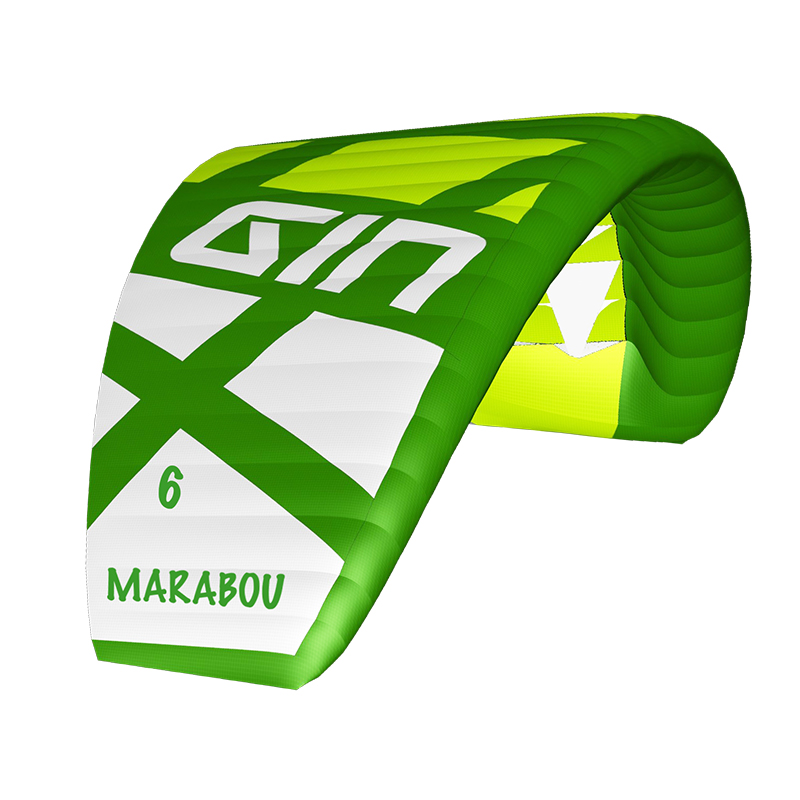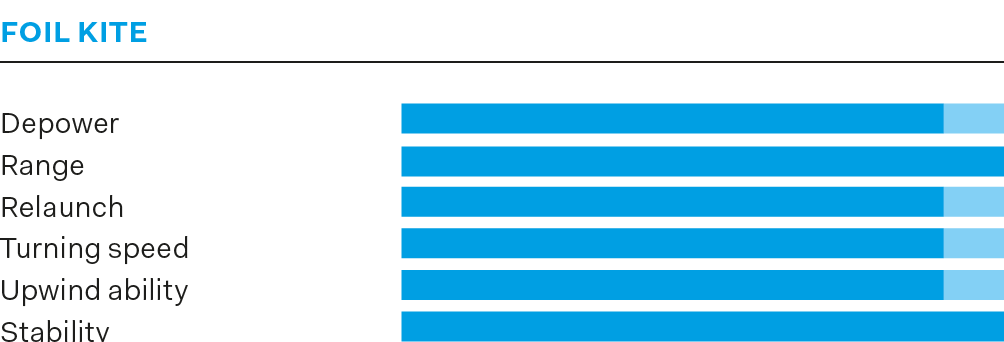When you purchase gear through links on our site, we may earn a small commission. Here’s why you can trust our tests and our affiliate partner.

It’s been an exciting few weeks here for our test team with various entirely new kites coming our way, however it has been some time since we have tested a kite that is conceptually completely new. Enter the GIN Marabou. One thing is for sure – this is not a tube kite. But nor is it a foil kite or a single skin kite, it is very much a hybrid, it is a “single-surface kite with a closed-cell leading edge construction”. Why you may ask? Well the merits of single skin kites are obvious, they are very light, very efficient and they pack down pretty much into your pocket. The disadvantage for kitesurfing? They sink… Which is problematic. So GIN’s solution is to have a double skinned ‘leading edge’. It is an ambitious concept but the benefits are clear. Without going in to too much detail about the engineering, the Marabou has chambers on the front of the kite and a water release system on the wingtips.
We tested the 4m and the 9m Marabou and used the 4m to help to teach some of the much younger (8-year-old) members of TheKiteMag team, so we had the opportunity to test it across a range of conditions and abilities. The first thing to note is that – even in relatively generously sized stuff-bags – both kites pack down very, very small. You could get four or five 9m Marabou’s into a standard 9m bag. The second thing is how stable the Marabou is in the air. The 4m in particular will fly in very little wind (sub 10 knots) and will then sit at the zenith rocking slightly forward and backward as the wind fluctuates. For an 8-year-old getting used to flying a bigger kite it’s perfect.
On the water, and with the 9m, the Marabou offers a completely different experience if you are used to tube kites – the power delivery is immediate, but without feeling like you have to ‘commit’, if you ease the bar out then the power stops immediately – it is a uniquely connected experience. Turning is also quicker and more pivotal then you can expect from a double skinned foil kite so you do get the best of both worlds. We rode both kites at the upper end of the wind range and the trailing edge does begin to flutter when you reach the top end, but the performance is still there and you can continue to fly the kite. We mainly rode the Marabou for foiling where it was exceptionally fun, but we can definitely see that it would be an enjoyable kite for freeriding on a twintip or potentially in the surf. So, the million dollar question: did it end up in the water and did it relaunch? The answer, yes, and yes.
In a sentence: It’s great to see such an innovative product on the market and hard to begin to understand the amount of R&D that must go into it, and it’s even better to report that it really does work very well!
Photos:
